Table of contents
Raw cucumbers (Cucumis sativus) are particularly popular in salads and are one of the lower-calorie vegetables due to their high water content. Organic quality is preferable.
Use in the kitchen
Because of their high water content, cucumbers are a welcome refreshment on hot summer days. The raw vegetable is mainly processed into salads by slicing or dicing the cucumber. The classic version is cucumber salad, which consists of finely sliced cucumbers. Refine the cucumber salad with herbs such as dill and parsley and try an oil-free salad dressing with walnuts or with avocado and onion . Cucumber salad is often served with a dressing made from sour cream or yoghurt. For a vegan version, you can use soy yoghurt, coconut yoghurt or vegan sour cream . Cucumbers are also found in Greek salads (you can find a vegan alternative to feta cheese here ). For Greek salad, they are cut into large pieces, while for Israeli salad they are diced very finely.
Cucumbers do not have a strong taste of their own. However, they can occasionally taste bitter, especially at the base of the stalk, as this is where the bitter substances form first. Cut off a generous amount of this piece because: if the cucumber tastes unpleasantly bitter and alien, then you should not eat it and spit it out straight away. The bitter taste can be caused by cucurbitacins, which are formed again due to accidental backcrossing. You can find out more about cucubitacins and potential health risks in the "Hazards" chapter.
Should you peel cucumbers? Cucumbers, such as salad cucumbers, can be eaten with the skin on. In general, you should only peel them if it is absolutely necessary, as most of the nutrients are contained in the skin. It is enough to wash the raw cucumber thoroughly before eating it and make sure it is organic when buying it. For a more delicate texture and a finer taste , peeled cucumbers are sometimes preferred. If organic quality is not available, it is a good idea to remove the skin.
In Asia, cooked cucumbers are used as a warm side dish. Raw cucumbers are also used in summer rolls, maki and salads. Asian cucumber salad differs from the classic one in that the cucumber slices are cut thicker. Rice vinegar, sesame oil, soy sauce and chili paste are used for the dressing. Depending on the variant, the cucumber salad is refined with sesame, garlic, chili flakes, lime juice or various nuts.
Cucumbers taste great in smoothies, as a topping on bread and as a dip for hummus and various spreads. You can find them as an ingredient on a raw food platter, in Greek tzatziki (tzaziki, zaziki), in bowls and in cream sauces. Cucumbers are also suitable in soups. The most well-known variant is gazpacho, a southern Spanish and Portuguese soup served cold, which consists of uncooked raw vegetables. Or try this raw food dish: cucumber rolls with chard and spinach cream .
In India, cucumbers are used for the Indian salad Kachumber or for the yogurt dip Raita. Cucumbers are also suitable for making curries and chutneys. The combination with different spices and herbs, such as turmeric, coriander and chili, creates an exotic note.
You can also pickle the cucumber at home and preserve it through lactic acid fermentation. Pickled cucumbers, the vinegar or salted cucumbers from the supermarket, are usually the smaller gherkins and not the salad cucumber.
Vegan recipe for raw cucumber and melon salad
Ingredients (2 people): 1 organic cucumber (raw), ½ cantaloupe melon (raw), ½ honeydew melon (raw), 1 avocado, 1 red onion, mint, coriander leaves, basil, juice of half an organic lemon, salt ,pepper, optional walnuts .
Preparation: Wash the cucumber (with the peel) and cut it into thin strips using a vegetable peeler. Cut the two halves of the melon into thin slices and then remove the peel. Cut the peeled onion into thin rings. Then separate the avocado from the stone and peel and cut into rings. Finely chop the mint, coriander leaves and basil together and mix with the lemon juice. Put everything in a bowl, mix well and season with salt and pepper. Optionally, add walnuts.
Vegan recipes with cucumbers (raw) can be found under the note: " Recipes that have the most of this ingredient ".
| Not only vegans or vegetarians should read this: Vegans often eat unhealthily. Avoidable nutritional errors . |
Purchasing - Storage
Cucumbers are part of the standard range in the vegetable department and can be bought at supermarket chains such as Coop, Migros, Denner, Volg, Spar, Rewe, Billa, Edeka, Aldi, Lidl or Hofer . Usually both conventional cucumbers and organic cucumbers are available. Organic quality can definitely be found in organic supermarkets such as Denn's Biomarkt and Alnatura . You can also find particularly fresh cucumbers at weekly markets in the DA-CH countries from April to September 1 during the season . Cucumbers can be bought all year round, but in winter they come from greenhouses or have been transported long distances, which is an ecological consideration.
When buying cucumbers, you should make sure that the skin is firm and undamaged. If the cucumber can be bent and is soft in places, this indicates that the cucumber is no longer so fresh.
The availability of cucumbers (raw) varies depending on the size of the store, catchment area, etc. Our recorded food prices for the DA-CH countries can be found above under the ingredient image - and by clicking on them you can see their development at various suppliers.
Storage tips
Cucumbers are most comfortable when stored in dark, cool conditions in the pantry, cellar or refrigerator. Ideal storage temperatures are 7-15 °C. Cucumbers are cold-sensitive vegetables. If the temperature is too low, cold damage occurs, which can be seen as mushy spots. If stored correctly, cucumbers can be kept for up to 3 weeks. Due to their high water content, cucumbers are not suitable for freezing.
Ingredients - Nutritional values - Calories
What nutritional values does the cucumber have? Raw cucumbers have 15 kcal per 100 g and are therefore one of the lower-calorie vegetables. Their water content can be up to 97%, which means they have few calories. The carbohydrate content of 3.6 g/100g is rather low. With 0.11 g fat and 0.65 g protein per 100 g, the cucumber is almost fat-free and very low in protein. Its fiber content covers 2% of the daily requirement. 2
Raw cucumbers contain 16 µg of vitamin K per 100 g, which is 22% of the daily requirement. Avocados have a similar amount at 21 µg/100g. Spinach has a high vitamin K content at 483 µg/100g and can also be eaten as a salad. 2
The amount of the mineral potassium per 100 g of cucumber is 147 mg (7% of the daily requirement), and red onions have similar values. Vegetables with a lot of potassium include fennel bulbs (414 mg/100g) and baby spinach (558 mg/100g). Cucumbers also contain small amounts of magnesium, phosphorus and calcium . 2 You can find exact values in the nutritional tables.
Cucumbers also contain small amounts of folate, 7 µg/100g. To reach the recommended daily dose of 200 µg, it is recommended to eat grains, legumes, brassicas and green leafy vegetables, such as red, cooked lentils (181 µg/100g), kale (141 µg/100g) and spinach (194 µg/100g). Other vitamins that cucumbers contain in small amounts are vitamin C, pantothenic acid and vitamin B6 . 2
Some bioactive compounds, such as steroids, terpenoids, glycosides and resins, were found in relatively high concentrations in cucumber. Other secondary plant substances, such as saponins, alkaloids and flavonoids, are present in moderate concentrations. Small amounts of tannins were also identified. 5
You can find all the ingredients of cucumbers, the coverage of the daily requirement and comparison values with other ingredients in our nutrient tables. In the article Nutrients explained you will get a detailed insight into the topic.
Health Effects
One study investigated the effects of ethanol extracts from cucumber (along with bottle gourd and squash) on diabetes. It found antihyperglycemic effects by lowering blood sugar levels in alloxan-induced diabetic rats, as well as lipid-lowering properties. 9 However, there are only a few studies to date that scientifically investigate these properties. Further studies are needed to confirm the exact mechanisms and clinically confirm these effects.
The seeds in the cucumber have antibacterial properties. Ethanol extracts from the cucumber and cucumber seeds have also been shown to have antifungal effects. 10
Cucumbers are also used as a remedy for ulcerative colitis (chronic inflammatory bowel disease) and have liver-protecting properties. 10
In the form of a cream formulation, cucumber can support wound healing and scarring. A treatment in rats showed a significant reduction in wound area, epithelialization time and scar width when applied locally, while the wound contraction rate increased compared to the control group. A reduction in inflammation and an increase in tissue blood flow and proliferation were also observed. The improved wound healing in laboratory rats is probably due to the flavonoids contained in the cucumber and their antioxidant properties. 11
One study investigated the effects of an aqueous extract of cucumber pulp on digestive problems. The results showed relief from bloating and gas in the gastrointestinal tract, as well as anti-acidic properties at high concentrations by stabilizing the pH in the stomach. 12 However, more research and clinical trials are needed to confirm the safety and effectiveness of these properties.
In addition, the secondary plant substance α-spinasterol, a phytosterol, is found in cucumbers. Most studies on α-spinasterol are in cucumber seed oil, but it has also been found in the pulp. Studies on this are limited and some are still unpublished. The most important pharmacological activities of α-spinasterol include the treatment of diabetes mellitus and anti-inflammatory properties. 13
Cucumber seed oil, which is produced from cucumber seeds, contains polyunsaturated fatty acids that have potential diuretic, antihypertensive, carcinopreventive (cancer-inhibiting) and cholesterol-lowering effects. Cucumber seed oil may have beneficial effects on reducing cardiovascular disease. This effect may be due to the phytochemicals it contains, including saponins, terpenoids, flavonoids and phytosterols. 14 However, further studies are needed to characterize the health benefits of cucumber seed oil and its constituents.
Dangers - Intolerances - Side effects
Cucurbitaceans originally contained cucurbitacins. Consumption of cucurbitacins can cause unwanted effects such as dizziness, nausea and diarrhea. Cucumbers have now been selected and bred in such a way that they do not contain any bitter substances. A suppressor gene or a mutation is probably responsible for the lack of cucurbitacins. However, backcrossing and stress can cause the bitter substances to regress. Cucurbitacins impart an extremely bitter and unpleasant taste even in the smallest quantities. Since the fruits of cucurbitaceans normally taste sweet, they can easily be distinguished from mutated plants and their fruits. Cultivated cucumbers that have a bitter taste should not be eaten. 8 Cucurbitacins have strong biological effects in isolated form, such as anti-cancer and anti-inflammatory properties. 7
If you are allergic to ragweed, you may experience cross-reactions with cucumbers and other relatives of the Cucurbitaceae family (pumpkin family), such as melons or zucchini . Eating cucumbers can therefore lead to allergic reactions due to the presence of the protein profilin. 15
Allergies or intolerances to cucumbers are poorly documented and there are few research results on the subject. However, these cannot be ruled out and can occur in rare cases. In addition, occupational allergies to cucumbers have been identified in greenhouse workers, which can appear in the form of asthma, rhinitis or hives (contact urticaria). 16
Folk medicine - natural healing
According to traditional Chinese medicine ( TCM ), cucumbers help to eliminate heat in the body. Cucumbers are considered to be blood-cleansing, diuretic, moisturizing and thirst-quenching. In folk medicine, they are therefore used for gout, bladder problems and for drainage. Cucumbers are also used for heartburn, acne and eczema and externally for sunburn or red, swollen eyes.
Ecological footprint - animal welfare
The CO 2 footprint of cucumbers depends on the cultivation system and regionality. Cucumbers are often grown in greenhouses because the regional climate is too cold outside of the season from April to September. Heating the greenhouses enables year-round cultivation, but it also requires large amounts of energy. This is also shown in a study in which regional cucumbers from conventional greenhouse production were compared with organic cucumbers from Spain in the period January to May. The emission values of 0.45 kg CO 2 eq/kg for imported organic cucumbers from Spain and 0.51 kg or 0.43 kg CO 2 eq/kg (depending on the calculation basis) for conventional local cucumbers differ only minimally. Half of the CO 2 emissions of the imported organic cucumber are due to transport, while for the regional cucumbers the greenhouse heating and fertilization are significant. 17
A study of the ecological footprint of food in Germany shows the same value of 0.4 kg CO 2 eq/kg for conventional or organic cucumbers, with or without plastic packaging. 18 A life cycle assessment study examined cucumbers produced in Spain and sold in Switzerland and found that the plastic packaging has a small environmental impact of only about 1% compared to the total environmental impact of the cucumber. The plastic film helps to protect the cucumbers from spoiling and reduces food waste. From an ecological point of view, the use of plastic film can therefore make sense, as the environmental benefit of the plastic packaging is greater than the negative environmental impact of the packaging itself. 2
The ecological CO 2 footprint of the cucumber is relatively small. In comparison: beef produces an average of 13.6 kg CO 2 eq/kg - compared to 0.45 for cucumbers. 17 In general, by buying a local cucumber during the season you are supporting the cucumber with the smallest ecological footprint.
The global average water footprint of cucumbers is 353 l/kg. This water consumption is comparable to other vegetables such as pumpkin (336 l/kg) and eggplant (362 l/kg). The water footprint of vegetables in general is around 322 l/kg and is significantly lower than that of cereals with 1644 l/kg and spices with 7000 l/kg. 19
According to the Lower Saxony State Office for Consumer Protection and Food Safety, cucumbers from conventional cultivation often contain pesticide residues. In 2009, 40% of the 87 samples examined had more than one active ingredient per sample (multiple residues). A total of 37 different active ingredients were found. Two samples were found to contain more than the maximum level, but the acute reference dose was not exceeded. 23 Products from organic farming are generally practically free of pesticides. When buying cucumbers, therefore, make sure they are organic.
Worldwide occurrence - cultivation
The origin of the cucumber is thought to be in India, because it has been cultivated there for several thousand years. The wild ancestor is said to be Cucumis sativus var. hardwickii, which grows at the foot of the Himalayas. 24
Compared to India, only a few types of cucumber are sold in Europe. There are numerous varieties there that differ in size, shape and color. In addition to the green cucumber, there are also orange, yellow and white ones, as well as very long fruits that can reach a length of 1 m. In the case of normally green specimens, a yellow color can also indicate stress or pest infestation of the cucumber. There are also twisted and crooked specimens.
Cultivation - Harvest
The cucumber is an annual, climbing plant that grows up to 4 m high. The stalked leaves of the cucumber are coarsely hairy, heart-shaped, slightly lobed and finely toothed at the leaf edge. The shoots of the salad cucumber are covered with fine spines and form winding tendrils. 21
The cucumber produces yellow, funnel-shaped flowers (May to September). Cucumber plants are usually monoecious - each plant produces either female or male flowers. Parthenocarpic breeding (virgin fruit = parthenocarpy) of cucumber varieties means that cucumbers almost exclusively have female flowers, which produce fruit even without pollination. This means that they are independent of pollination by insects, which is beneficial for greenhouse cultivation. A few days after pollination, a fruit begins to form, and it takes about 3 weeks to harvest. 21
Cucumbers are usually 25-30 cm long, green, spindle-shaped and straight to curved. The fruits are harvested when the cucumber still has a very thin skin and tender seeds. Cucumbers are propagated by seeds or cuttings. 21
Cucumber plants can be cultivated on the ground by climbing or vining. When in contact with the ground, the shoots continually form new roots. In the greenhouse, cucumbers climb up a rope, climbing frame or stick to save space. The cucumber plant loves warmth and is sensitive to frost, which is why it feels at home in a greenhouse or polytunnel. Pure outdoor cultivation is not economically viable, as the sensitivity of the cucumber speaks against it. 6
Cucumbers usually grow in the soil in polytunnels, but cultivation in substrates has become established in greenhouses. A substrate made of rock wool (or alternatively coconut fiber) enables soilless cultivation. The roots of the cucumber plant cling to the rock wool, which provides support and is replaced after 2-3 seasons. A big advantage is that you do not have to observe crop rotation in order to guarantee optimal soil health. 6 Soilless substrates are not permitted in organic cultivation.
Only certain cucumbers are suitable for outdoor cultivation. Field cucumbers are shorter and thicker than salad cucumbers, have a thicker skin and developed, edible seeds. Field cucumbers have a prickly skin and are therefore often used peeled. The skin of the salad cucumber is more delicate and it does not have pronounced seeds. Field cucumbers also do not need any trellises, as they grow on the ground and are more resilient and weather-resistant. 6
Pickled cucumbers and gherkins, known colloquially in Austria as "Gurkerl" or "Essiggurkerl", are also grown outdoors. They are only a few centimeters long and have a warty surface. These include peeled cucumbers, which have a lot of flesh and only a small core. Harvested young, the thicker cucumbers are processed into the popular gherkins. Peeled cucumbers also cope well with the climate in the DA-CH countries, which is why they are suitable for growing outdoors. When harvested, peeled cucumbers are yellow in color. You can find them pickled on the shelves as mustard or honey gherkins. 6
Growing your own
cucumbers You can easily grow your own cucumbers in your own garden. You sow the cucumbers directly outdoors or you plant a pre-crop. By growing the young plants on the windowsill, the harvest can be several weeks earlier than if you sow them directly. In both cases, as soon as there is no longer any late frost, you can sow outdoors in mid-May (after the Ice Saints). Cucumbers are not self-tolerant, which is why you should consider a 4-year break between cultivation. 22
A sunny spot with humus-rich, loose soil with sufficient water retention is ideal. Sandy loam soils with a high content of organic substances and a pH value of 6 to 7 are ideal. However, the sand content should not be too high in order to avoid high water permeability and the resulting water shortage. Heavy, wet or compacted soils are also not recommended for cucumber growth. 22 For rapid growth and a plentiful harvest, it is advisable to fertilize the cucumber plant, as it is one of the most demanding (nutrient-hungry) vegetables. 21
Cucumbers are also ideal for growing in pots. A climbing aid, such as a metal or wooden rod, is ideal for this, as it allows the plant to climb up with its tendrils. This way, the pot can be placed on the balcony to save space. You can also tie the cucumber plant up with ropes to guide it upwards. 22
Snack or mini cucumbers are also a popular type of cucumber for personal use. Due to their smaller size of 10 to 15 cm, they are ideal for growing on the balcony. The small fruits have a smooth skin and are also suitable for pickling. 6
Cultivation errors such as an incorrect location with strong temperature fluctuations, poor soil conditions, incorrect water supply (too little) or a lack of fertilizer can weaken the cucumber plant. These errors should be avoided because salad cucumbers are often affected by pests and fungi such as powdery mildew, downy mildew, gray mold, spider mites or aphids. In addition, these stress factors can cause cucumbers to taste bitter. 22
Further information
Cucumis sativus belongs to the gourd family ( Cucurbitaceae ). Basically, a distinction is made between two groups of varieties, salad cucumbers and pickled cucumbers (cucumbers). However, there is no clear classification when it comes to naming the cucumber varieties. In addition to groups and varieties, there are also types. In practice, they are classified not only according to how they can be grown (greenhouse or open field) but also according to how they can be used (salad or pickled cucumbers). Size is also a decisive factor in what pickled cucumbers are used for, for example. The names can vary depending on the country, region and manufacturer.
Until 2009, the Cucumber Curvature Regulation was in force in the EU, which specified certain standards for the curvature of cucumbers sold. The abolition of this regulation made it possible to offer cucumbers in different shapes and curvatures on the market. However, the majority of consumers prefer straight cucumbers, which also have logistical advantages as they are better suited to packing in boxes.
Externally, it can be confused with the Armenian cucumber ( Cucumis melo var. flexuosus ), which is also known as a snake cucumber or cucumber melon. Young specimens are light green, furrowed lengthways and slightly hairy and taste similar to the cucumbers we know, but have a bitter note. 3
Alternative names
The salad cucumber is also known as snake cucumber. Often the general term cucumber is used, for which the synonyms Kukumer (Latin Cucumer), Guckummer, Gummer and Garden cucumber is common. In English it is called cucumber.
Other uses
The cosmetic industry uses cucumber in skin creams, face masks, lotions, eye pads, after-sun products, toners and facial cleansers. It is found in cosmetic products that have moisturizing and soothing effects on the skin, promote skin elasticity, treat skin problems such as sunburn and wrinkles and have a lightening effect. 4
Bibliography - 23 Sources (Link to the evidence)
| 1. | Gemuese ch: Gurke. |
| 2. | USDA (United States Department of Agriculture). Nährwerttabellen. |
| 3. | Bundesanstalt für Landwirtschaft und Ernährung. Unterliegen die sogenannten "Wildgurken" aus der Türkei der UNECE-Vermarktungsnorm für Gurken? 2013. |
| 4. | Mukherjee PK, Nema NK, Maity N, Sarkar BK. Phytochemical and therapeutic potential of cucumber. Fitoterapia. January 2013;84:227–236. |
| 5. | Uzuazokaro MMA, Okwesili FCN, Chioma AA. Phytochemical and proximate composition of cucumber (Cucumis sativus) fruit from Nsukka, Nigeria. Afr J Biotechnol. 19. September 2018;17(38):1215–1219. |
| 6. | Land schafft Leben: Gurke Herstellung: Salat- und Feldgurken. |
| 7. | Zieniuk B, Pawełkowicz M. Recent Advances in the Application of Cucurbitacins as Anticancer Agents. Metabolites. 2023;13(10):1081. |
| 8. | Andersson HC, Gry J, Søborg I. Cucurbitacins in plant food. Nordic Council of Ministers; 2006. |
| 9. | Sharmin R, Khan M et al. Hypoglycemic and Hypolipidemic Effects of Cucumber, White Pumpkin and Ridge Gourd in Alloxan Induced Diabetic Rats. Journal of Scientific Research. 2013;5(1):161–170. |
| 10. | Mallik J, Das P, Das S. Pharmacological Activity of Cucumis Sativus L. – A Complete Overview. Asian Journal of Pharmaceutical Research and Development. 2013;1(1):1–6. |
| 11. | Patil MV, Bhise S, Kandhare A. Pharmacological evaluation of ameliorative effect of aqueous extract of Cucumis sativus L. fruit formulation on wound healing in Wistar rats. Chron Young Sci. 2011;2(4):207. |
| 12. | Sharma S, Dwivedi J, Paliwal S. Evaluation of antacid and carminative properties of Cucumis sativus under simulated conditions. Der Pharmacia Lettre, 2012;4(1):234-239. |
| 13. | Majeed M, Ahmad F, Mundkur L, Appian S. Pharmacology of α-spinasterol, a phytosterol with nutraceutical values: A review. Phytotherapy Research. 2022;36(10):3681–3690. |
| 14. | Oragwu I, Okolo A et al. Phytochemical and Proximate Composition of Cucumber (Cucumis Sativus) Seed Oil. International Journal of Research and Scientific Innovation. 2021;08(2):244–250. |
| 15. | Ragweed-info at: Ambrosia artemisiifolia Medizinisch-allergologische Bedeutung. |
| 16. | Suojalehto H, Hölttä P, Lindström I, Suomela S. Prevalence of tomato and cucumber sensitization among greenhouse workers. The Journal of Allergy and Clinical Immunology: In Practice. 2022;10(2):640–642. |
| 17. | Raab M, Brunklaus B, Pöchträger S. Gegenüberstellung von importierten Biogurken aus Spanien und heimischen konventionellen Gurken in der Winterzeit anhand des CO2-Fussabdruckes. Jahrbuch der Österreichischen Gesellschaft für Agrarökonomie, 2013;23:171-180. |
| 18. | Reinhardt G, Gärtner S, Wagner T. Ökologische Fussabdrücke von Lebensmitteln und Gerichten in Deutschland. Institut für Energie - und Umweltforschung Heidelberg. 2020. |
| 19. | Mekonnen MM, Hoekstra AY. The green, blue and grey water footprint of crops and derived crop products. Hydrol. Earth Syst. Sci. 2011; 15: 1577-1600. |
| 21. | Plantura garden: Gurken: Herkunft, Steckbrief & Mehrjährigkeit. |
| 22. | Plantura garden: Gurken pflanzen: Standort, Aussaat & Pflege. |
| 23. | Niedersächsisches Landesamt für Verbraucherschutz und Lebensmittelsicherheit. Pflanzenschutzmittelrückstände in Salatgurken. 2009. |
| 24. | Munshi AD, Panda P, et al. Genetic variability in Cucumis sativus var. hardwickii R. (Alef.) germplasm. Cucurbit Genetics Cooperative Report. 2007;30:5-10. |

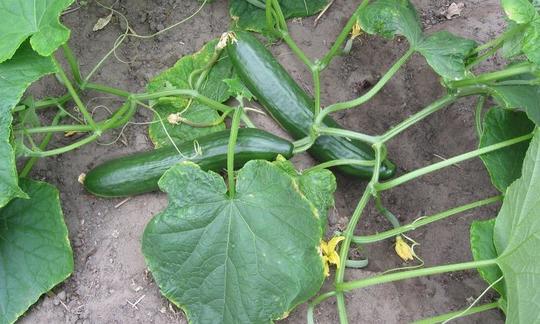

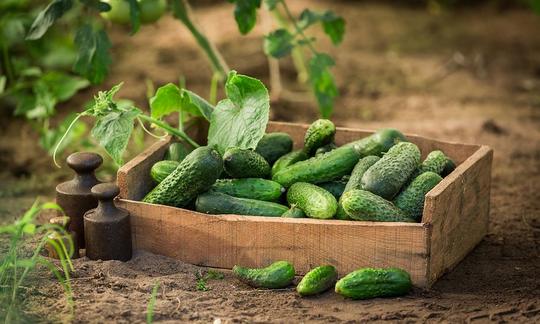

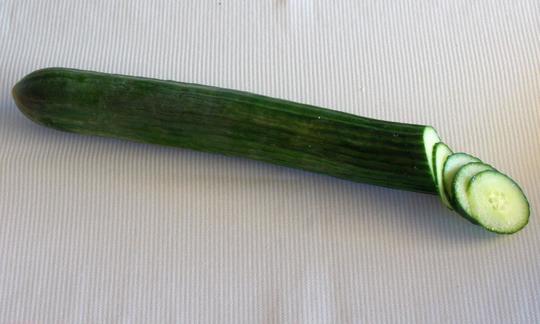

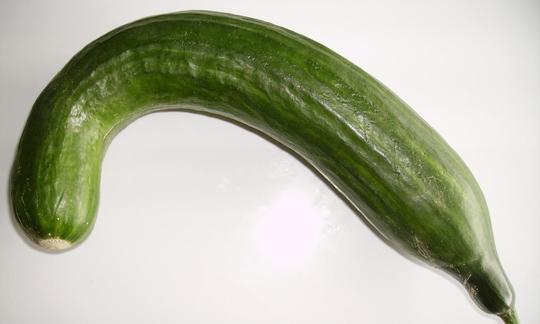

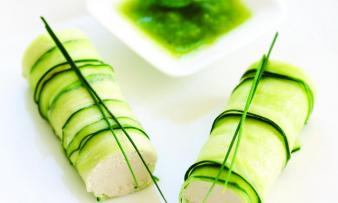
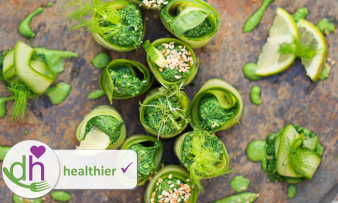
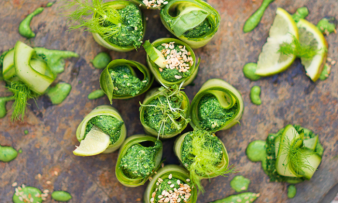





Comments